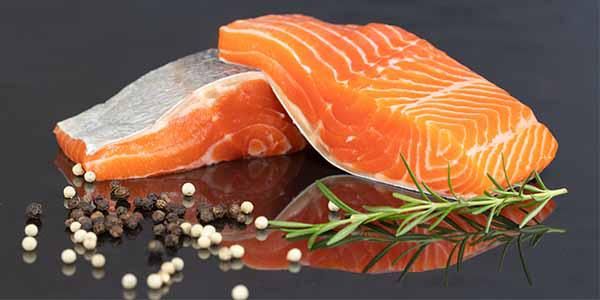Salmon has consistently ranked among the top seafood for consumption in 2020. Even in Germany, it came at the top. It is frequently served, mainly near the holiday season. Aquaculture supplies almost all of the salmon goods in our shops.
A typical definition of salmon is an oily fish high in omega-3 fatty acids and protein. The international market is the primary market for Atlantic salmon. However, most Pacific salmon captures from the wild. There are numerous types of salmon, including chinook, coho, pink, red, salmo salar, and silverbrite. Due to its several health advantages, it offers, such as the lowered risk of heart disease, maintenance of body mass index, and bone growth and development, demand for salmon is rising quickly on a global scale. According to Astute Analytica, the global salmon market will grow at a CAGR of 4.2% from 2022 to 2030.
One of the many species raised in captivity is salmon. For every kilo of farmed fish and crustaceans produced, only 220 grams of wild fish are used, according to a study of the entire worldwide aquaculture business.
Listed below are some debunking myths about farmed salmon:
Farmed salmon contains a lot of antibiotics:
The supposition remains, yet it is incorrect. After all, many diseases can prevent in non-human animals through preventative measures like hygiene. Fish aquaculture follows the same rules. In a recent investigation by Stiftung Warentest, the farmed salmon tested contained no traces of antibiotics.
A kilogram of farmed salmon requires five kilograms of wild fish:
Although this number is out of date, it keeps coming up. Today, the average amount of wild fish required is less than one kilogram. The amount of fish meal and oil used is currently less than 30% of the feed used in agriculture. Nowadays, a large portion of this comes from processing leftovers. The remaining elements like corn, soy, and wheat are grown on land. The Aquaculture Stewardship Council's (ASC) criteria mandate that both marine and plant-based materials must come from ethical suppliers, as they should both.
Salmon aquaculture is factory farming submerged:
People should take animal welfare into account in all animal husbandry practices. Hence, to the requirements of the concerned species. In fish farming, this is also true. Norway's salmon farms allow the fish to occupy 2.5% of the enclosure, with the remaining 75% filled with water. This allows the fish to swim freely, though shoaling fish prefer cuddlier and stick together.
Salmon farming drives dead sea beds:
Equivalent to food production on land, salmon farming in the ocean influences the soil, resulting in lifeless sea beds. ASC-certified salmon farmers are required to show that they are preserving the ecosystem beneath (and around) their farm(s) by analyzing chemical and biological factors, such as the kind and variety of marine life. The seabed can regrow during additional fallow periods or times when the cages are empty. The seabed and its people can safeguard it in this way.
Controlling salmon lice harms the environment:
It is a marine parasite that infests trout in the sea and salmon, both farmed and wild. Controlling salmon lice harms the ecology. They make the animals ill by feeding on the fish's skin and muscles. Salmon must be kept healthy, and the environment must not be harmed, according to ASC regulations. In order to combat biological pests, many farmers now employ cleaner fish, salmon lice traps, bubble nets around their fields, and other non-medical methods.
Large businesses just care about making money from salmon farming:
Similar to almost any business, salmon farming has a wide range of players, from multinational corporations operating in several nations to family farms collaborating. What they have in common: In Norway just as much as in Chile or Iceland, the majority of salmon farms are situated in rural areas and, along with fish processing, are frequently the sole source of income for small towns. Big is not necessarily bad, though. Large corporations invest much in research, which benefits the entire sector. Furthermore, they have a much bigger influence than small farms do if they work more sustainably.
Closing Note:
The quality of salmon from farms is not as bad as individuals consider. In any case, salmon aquaculture has advanced considerably in recent years. For instance, the feed composition has improved and reduced the use of antibiotics. Laws are important, but certifications like the ASCs have been the main force behind advancements and advances in salmon farming.






 The minimum wage is not a living wage.
StableDiffusion
The minimum wage is not a living wage.
StableDiffusion
 influential nations
StableDiffusion
influential nations
StableDiffusion












